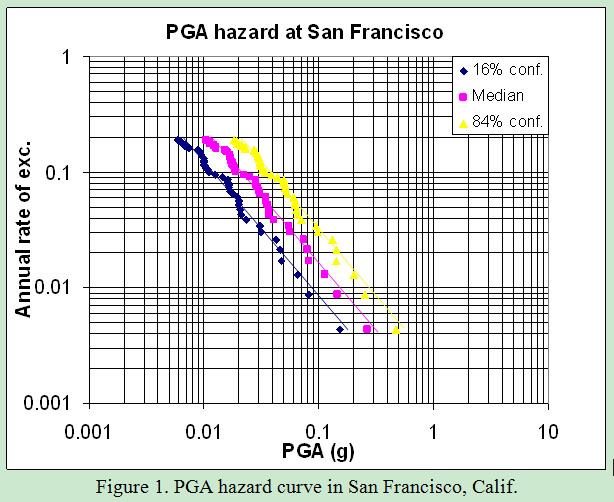

KGS Home > Geologic Hazards
New Approach for Seismic Hazard Analysis
The main purpose of a seismic hazard analysis is to estimate seismic hazard in terms of a level of ground motion and its occurrence frequency at a site or in a region from the instrumental, historical, and geological records. As demonstrated (Problems with Probabilistic Seismic Hazard Analysis [PSHA]), the commonly used approach – PSHA does not provide the hazard estimate. A new approach, called seismic hazard assessment (SHA), has been developed (a. UNDERSTANDING SEISMIC HAZARD AND RISK ASSESSMENTS: AN EXAMPLE IN THE NEW MADRID SEISMIC ZONE OF THE CENTRAL UNITED STATES; b. Seismic hazard and risk assessment in the intraplate environment:The New Madrid seismic zone of the central United States) with the aim of deriving a hazard curve that is consistent with observations and can be used for seismic risk assessment. This approach directly utilizes the ground-motion attenuation and earthquake occurrence frequency relationships. Figure 1 shows peak ground acceleration (PGA) hazard curves in San Francisco, Calif., from the historical earthquakes.
